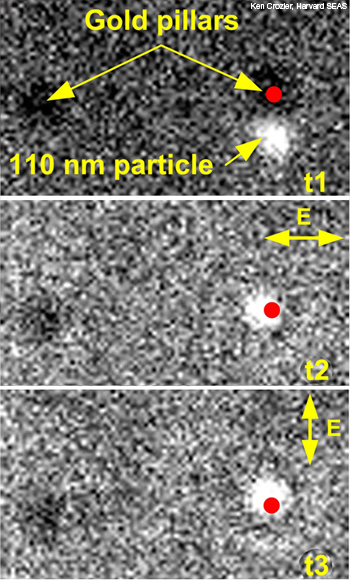Scatterings
Trap and Spin Nanoparticles
Researchers recently described a method that allows them to capture particles as small as 110 nm and rotate them around the surface of tiny gold pillars.
 Fluorescence images of a 200-nm-diameter polystyrene sphere trapped in the electric field hot spot at a gold nanopillar about 280 nm across. The polarization of the light controls how the sphere rotates around the pillar.
Fluorescence images of a 200-nm-diameter polystyrene sphere trapped in the electric field hot spot at a gold nanopillar about 280 nm across. The polarization of the light controls how the sphere rotates around the pillar.
A new version of optical tweezers allows researchers to passively or actively rotate small particles via optical polarization. Kai Wang and others in Ken Crozier’s lab at the Harvard School of Engineering and Applied Sciences (U.S.A.) recently described a method that allows them to capture particles as small as 110 nm and rotate them around the surface of tiny gold pillars (Nature Comm. 2, 469; doi:10.1038/ncomms1480).
…Log in or become a member to view the full text of this article.
This article may be available for purchase via the search at Optica Publishing Group.
Optica Members get the full text of Optics & Photonics News, plus a variety of other member benefits.
